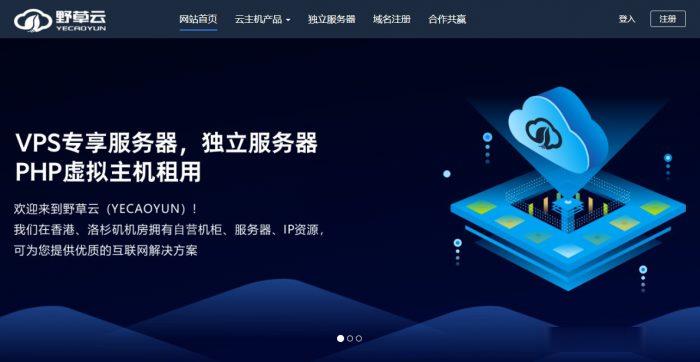builthao.rising.cn
hao.rising.cn 时间:2021-03-20 阅读:()
EnvironmentalImplicationofElectricVehiclesinChinaHONGHUO,*,QIANGZHANG,MICHAELQ.
WANG,§DAVIDG.
STREETS,|ANDKEBINHE*,⊥InstituteofEnergy,EnvironmentandEconomy,TsinghuaUniversity,Beijing100084,China,CenterforEarthSystemScience,TsinghuaUniversity,Beijing100084,China,CenterforTransportationResearch,ArgonneNationalLaboratory,9700SouthCassAvenue,Argonne,Illinois60439,DecisionandInformationSciencesDivision,ArgonneNationalLaboratory,9700SouthCassAvenue,Argonne,Illinois60439,andStateKeyJointLaboratoryofEnvironmentSimulationandPollutionControl,DepartmentofEnvironmentalScienceandEngineering,TsinghuaUniversity,Beijing100084,ChinaReceivedFebruary15,2010.
RevisedmanuscriptreceivedMay10,2010.
AcceptedMay11,2010.
Today,electricvehicles(EVs)arebeingproposedinChinaasoneofthepotentialoptionstoaddressthedramaticallyincreasingenergydemandfromon-roadtransport.
However,themassuseofEVscouldinvolvemultipleenvironmentalissues,becauseEVsuseelectricitythatisgeneratedprimarilyfromcoalinChina.
Weexaminedthefuel-cycleCO2,SO2,andNOxemissionsofEVsinChinainbothcurrent(2008)andfuture(2030)periodsandcomparedthemwiththoseofconventionalgasolinevehiclesandgasolinehybrids.
EVsdonotpromisemuchbenetinreducingCO2emissionscurrently,butgreaterCO2reductioncouldbeexpectedinfutureifcoalcombustiontechnologiesimproveandtheshareofnonfossilelectricityincreasessignicantly.
EVscouldincreaseSO2emissionsby3-10timesandalsodoubleNOxemissionscomparedtogasolinevehiclesifchargedusingthecurrentelectricitygrid.
Inthefuture,EVswouldbeabletoreachtheNOxemissionlevelofgasolinevehicleswithadvancedemissioncontroldevicesequippedinthermalpowerplantsbutstillincreaseSO2.
EVsdorepresentaneffectivesolutiontoissuesinChinasuchasoilshortage,butcriticalpolicysupportisurgentlyneededtoaddresstheenvironmentalissuescausedbytheuseofEVstomakeEVscompetitivewithothervehiclealternatives.
1.
IntroductionInordertocopewiththeoilsecurityissue,manycountriesworldwidearemakingsubstantialeffortstoreducethedependenceoftheirtransportationsectoronpetroleumresourcesandyetfulllthefueldemandofthetransport(1-3).
Chinafacesthesamechallengesasothercountries.
Sincethe1990s,Chinahasbeenexperiencingveryrapidgrowthinvehiclepopulation.
ThevehiclepopulationinChinawasabout63millionby2008,anditisprojectedtobe550-730millionby2050(4),38-83%higherthanthatoftheU.
S.
in2050(5).
Oneimportantquestionraisedishowtoaccom-modatethislargenumberofvehiclesintermsofenergysources.
TodayinChinaonefrequentlyproposedansweriselectricvehicles(EVs),whichcouldalleviatedependenceonpetroleumbyusingotherenergysourcessuchascoalandhydro.
Nowelectrictwo-wheelers(E-2Ws)andthree-wheelersareverypopularinChina.
SomeE-2Wmanufacturersarealreadyproducingthree-orfour-wheelfullyenclosedEVsusingthesamebatterytechnologyasE-2Ws(6).
Recently,China'slargestelectricityproviderannouncedtheconstruc-tionofchargingstationsforEVsinBeijing,Shanghai,andTianjin.
Also,thesuccessfuldemonstrationofEVsinBeijingduringtheOlympicGamesencouragedthepromotionofEVsinChina(7).
In2009,theChinesegovernmentinitiatedaprogramnamed"TencitiesandThousandVehicles",whichplanstoselectmorethan10citiesandtointroducemorethan1000HEVsandEVs(primarilyusedastaxisandbuses)ineachoftheselectedcitiesinthreeyearswithgovernmentsubsidy.
Thirteencitieswereselectedtoparticipateinthisprogram(seeFigure1forthelocationofthesecities),andthenumberofcitiesisincreasing.
Nowadays,ChinaisconsideredtobeaverypromisingmarketforEVs.
ThepowerofEVsiselectricityfromthegrid.
WhileEVscanofferattractivebenetsinpetroleumreduction,theycouldresultinmoreCO2emissionsthanconventionalvehiclesbecauseofthefactthatthemajorityofelectricityisgeneratedfromcoalinChina.
Anotherconcernassoci-atedwithEVsisthattheycouldincreaseemissionsofcriteriapollutantslikeSO2andNOxbecausepowerplantsarebelievedtobethelargestcontributortoChina'sSO2andNOxemissions(8).
Inviewofthis,weevaluatetheenvironmentalimpactsofEVsbyexaminingtheirpotentialCO2,SO2,andNOxemissionsinChinafromafuel-cyclepointofviewandcomparingthemwiththoseofconventionalgasolineinternalcombustionenginevehicles(ICEVs)andgasolinehybridelectricvehicles(HEVs)onaper-kilometerbasis.
Chinaisinaperiodofrapidchangeincompositionandcombustiontechnologiesofpowerplants,soweexaminetwotimepoints-current(2008)andfuture(2030).
TheGREET(Greenhousegases,RegulatedEmissions,andEnergyuseinTransportation)model(9),whichisdevel-opedbyArgonneNationalLaboratory,isadjustedwithdataforChinaandemployedforthisworktosimulatethefuel-cycleemissionsofthevehicles.
2.
GenerationMixCO2emissionsofEVsaredependentontheCO2-intensityofthegenerationmixforchargingEVs,andtheirSO2andNOxemissionsdependonnotonlythegenerationmixbutalsotheemissioncontroltechnologiesinthermalpowerplants.
Chinaconsistsofsixlargeinterprovincialpowergrids,whicharenamedfortheregionstheyserve:NortheastChina,NorthChina,CentralChina,EastChina,NorthwestChina,andSouthChina.
Thesixgridsarenotstrictlyindependent,asonegridcanbuypowerfromanothergridifneeded.
Figure1presentsthegenerationmixofthesesixpowergridsin2008(10).
CoalandhydroarethetwomajorenergysourcesofpowergenerationinChina,andthesplitbetweenthemvariesbyregion.
Coal-basedpowerdominatesintheNortheastandNorthgenerationmixes,withaproportionashighas95-98%.
TheNorthwest,Central,andSouthmixes*Correspondingauthore-mail:hhuo@tsinghua.
edu.
cn(H.
H.
),hekb@tsinghua.
edu.
cn(K.
H.
).
InstituteofEnergy,EnvironmentandEconomy,TsinghuaUniversity.
CenterforEarthSystemScience,TsinghuaUniversity.
§CenterforTransportationResearch,ArgonneNationalLaboratory.
|DecisionandInformationSciencesDivision,ArgonneNationalLaboratory.
⊥DepartmentofEnvironmentalScienceandEngineering,Tsin-ghuaUniversity.
Environ.
Sci.
Technol.
2010,44,4856–486148569ENVIRONMENTALSCIENCE&TECHNOLOGY/VOL.
44,NO.
13,201010.
1021/es100520c2010AmericanChemicalSocietyPublishedonWeb05/24/2010consistofmorethan22%hydropower,althoughcoalisstillthemajority.
TheSouthandEastgridsalsohave5%nuclearpower.
IntheU.
S.
,theelectricityconsumptionhasremainedstableinrecentdecades.
TheannualincreaserateofelectricityconsumptionintheU.
S.
was0.
5%during2000and2009andisprojectedbytheU.
S.
EnergyInformationAdministration(EIA)tobe0.
8%during2005and2035(11).
U.
S.
studieshavearguedthattheincreasingpenetrationofEVs(orplug-inhybrids)mayrequireadditionalnewpowercapacity,andtheenergyandenvironmentalimpactsofEVsshouldbeevaluatedbasedonthemarginalgenerationmix(12-14),whichisreasonablebecauseEVswillbetheprimaryreasonforthenewcapacity.
ButitisdifferentforthecaseofChina.
TheannualincreaserateofelectricityconsumptioninChinawas13.
5%during2000and2007(15)andisprojectedtobe5%during2010and2030(16).
ThegrowthofgenerationcapacityinChinaisdrivenbytheincreasingelectricitydemandforindustrial,residential,commercial,andtrans-portationsectors(16-18).
ThepotentialgrowthofEVsisoneofthedrivingforcesinChina,butitwillnotbestrongerthanthegrowthinothersectors.
BasedonsomeprojectionsforChinesenationalelectricitysupply(16-18)(EVs'potentialdemandwasnottakenintoaccountintheseprojections),weestimatethatthesparecapacityfromnewlyaddedplantsshouldalwaysbeabletofulllthenewdemandfromEVsfornowandthefuture(seeTable1)(10,14,16-22),whichmeansthatEVsinChinawillnotbeabletocausemajorchangeinpowergenerationcapacityevenwiththemostaggressivescenarioofalllight-dutypassengervehiclesonroadasEVsby2030(whichisfarfrompossible),andthuswillnotproducemarginaleffectsonpowergenerationcapacity.
Inthiswork,therefore,weestimateEVemissionsonthebasisoftheaveragegenerationmixratherthanthemarginalgenerationmix.
WithrespecttoChina'spotentialnewplantsbuiltinthefuture,sinceChinahaslimitedresourcesofoilandnaturalgas,themajorfossilfuelusedinChina'snewplantswillstillbecoal.
Inaddition,Chinaisplanningtoenhancethefractionofnonfossilgeneratingcapacitybyexpandinghydroandnuclearpoweranddevelopingnewplantsbasedonrenew-ableenergyresourcessuchaswindandsolar.
Obviously,thefractionofcoal-basedelectricityisacriticalparameterforevaluatingtheenvironmentalimpactsofEVs.
NumerousstudiesworldwidehavemadeprojectionsofthefutureoptionsforpowersupplyinChina.
EIAandtheInternationalEnergyAgency(IEA)projectedthatcoalwouldremainthepredominantfuelingeneration,and78-81%ofelectricityusedwouldbedrawnfromcoalby2030(17,18).
Domesticinstitutesaremoreoptimisticonthisissue,andtheyprojectthattheshareofcoalpowercouldbereducedto72%by2030(16)oranevenmoreambitioustarget-65%by2020(23).
CO2Emissions.
Theenergyefciencyofcoal-redpowerplantsinChinaiscurrentlyabout32-34%(16,24).
WeestimatetheCO2emissionrateofcoal-redpowerplantstobe1002gCO2/outlet-kWh,accordingtothelowheatingvaluesandcarboncontentofcoal,theproportionofeachtypeofcoalusedinpowergeneration,andtheelectricaltransmissionlosses(25-27),asshowninTableS1(where"S"referstotheSupportingInformation).
Weassumethatthecoalcompositionwouldbeunchangedinthefuture.
TherearenoreportsavailableonHEVs'orEVs'on-roadenergyefcienciesinChina,soweadoptedtheratiosoffuelefciencyvaluesofHEVsandEVstothoseofconventionalvehiclesintheGREETmodelinordertocomparethethreetypesofvehiclesonthebasisofthesameweightanddrivingconditions.
ThefuelconsumptionratesofEVs,ICEVs,andHEVsarepresentedinTable2(28,29).
Thedensityofgasolineis0.
732L/kg,anditscarbonratiois85.
5%(30).
TheGREETmodelshowsthatpowergenerationisresponsiblefor99%oftotalfuel-cycleCO2emissionsofEVspoweredbycoal-basedelectricity,suggestingthatpowergenerationisbyfarthedominantcontributortoCO2emissionsofEVs.
Figure2presentsthecurrentfuel-cycleCO2emissionsofEVspoweredbythesixregionalgridsandcoal-basedelectricityaswellastheCO2emissionsofgasolineICEsandHEVs.
Asshown,theCO2emissionsofEVsvarysignicantlybyregionbecauseofthedifferentregionalgenerationmixes.
EVspoweredbycoal-basedelectricitycouldincreaseCO2emissionsby7.
3%comparedtogasolineICEVs.
Conse-quently,EVsintheregionswherecoalcontributesahighproportionofpowergeneration(theNortheast,North,andEastregions)showverylimitedbenetinCO2reductionorcouldevenincreaseCO2emissions(suchasintheNorthregionwhereBeijingislocated),comparedtoICEVs.
However,inregionsthatpossessabout35%nonfossilelectricity(theSouthregions),EVscouldhavethesameCO2emissionlevelasgasolineHEVs,whichis30%lowerthangasolineICEVs.
So,thechoiceoflocationforusingEVscouldsignicantlyaffecttheCO2reductionbenet,frompositivetonegative.
Inthissense,theregionswithsmallerfractionsofcoal-basedelectricityshouldbethepriorityEVmarkets,suchastheSouth,Central,andNorthwestregions.
Forexample,ofthecitiesthatarechosenforthe"TenCitiesandThousandVehicles"Program(seeFigure1),EVsareagoodchoiceforChongqing(Central)andShenzhen(South),butFIGURE1.
Generationmixofthesixinterprovincialpowergridsin2008.
VOL.
44,NO.
13,2010/ENVIRONMENTALSCIENCE&TECHNOLOGY94857HEVswouldbeabetterchoicethanEVsforBeijing(North)andShanghai(East)intermsofCO2emissionreduction.
Chinaisplanningtodecreasethecarbonintensityofelectricitygenerationbyincreasingtheshareofnonfossilpowercapacity,andthereforeEVscouldbeexpectedtooffergreaterCO2savingsinthelongrun.
Figure3projectstheCO2emissionsofEVsasafunctionofthefractionofcoal-basedelectricity.
Theenergyefciencyofcoal-redpowerplantsisassumedtoriseto40%in2030(16).
Thefuelconsumptionratesofthethreetypesofvehiclesarealsoassumedtoimproveby2030(seeTable2).
AsshowninFigure3,thetheoreticalCO2breakevenpointbetweenEVsandICEVsis87%coalpower,whichmeansthatEVswouldhaveaCO2-reductionadvantageovergasolineICEVsifthecoalfractionisbelow87%.
The78-81%coalfractionsprojectedbyEIAandIEA(17,18)translatetoaCO2reductionof10%comparedtoICEVs.
UnderthemoreaggressiveprojectionsmadebyChineseinstitutes(65-72%)(16,23),theCO2emissionsofEVsare18-25%lowerthanICEVs,but7-18%higherthanHEVs.
Withtherightlocationschosen,theCO2reduction-benetofEVswouldbelarger.
Forinstance,theNorthwest,Central,andSouthregions,whichhaveplentyofhydroandwindresources,arethekeyregionstodevelopnonfossilpowerinChina.
Iftheirnonfossilelectricitysharereaches50%by2030,EVsoperatedintheseregionscouldachieveaveryimpressiveCO2reductionof18%comparedtoHEVs.
SincegasolineHEVscombustpetroleum-basedfuel,EVswouldbemoreattractivethanHEVswithalmostzeropetroleumuseandlowerCO2emissions.
AsshowninFigure3,thebenetcouldbeenlargedbyhigherenergyefciencyofpowerplants.
Onepercentilepointimprovementinenergyefciencywillbring2-5%moreCO2reductioncomparedtoHEVs.
Carboncaptureandsequestration(CCS)technologiescouldhelptoearnmorecarboncreditsforEVs,buttheyaresubjecttomanytechnicaluncertainties.
SO2Emissions.
Powerplantscontributemorethan97%offuel-cycleSO2emissionsofEVschargedwithcoal-basedelectricityaccordingtotheresultsfromGREET.
Thesulfurcontentofcoalandthepenetrationofue-gasdesulfurization(FGD)systemsaretwoimportantfactorsinuencingSO2emissionsfromcoal-redpowerplants.
ThesulfurcontentvariessignicantlyacrossregionsinChina,fromaslowas4.
2g/kgofcoalinthenortheastregiontoashighas14.
7g/kginthecentralregion(31)(seeTableS2).
FGDistypicallyabletoremove85%ofsulfuremissions.
Allunitsbuiltafter2004andalargefractionofexistingonesarerequiredtobeinstalledwithFGDunderChineselaw.
In2005,thecapacityofunitswithFGDwasonly10%ofthetotalcapacityofcoal-redplants(32).
WiththeaggressivetargetsetbytheChinesegovernmenttoreducenationalSO2emissionsby10%from2005to2010,theFGDpenetrationinthepowersectorisrisingrapidly,anditwasreportedtobe60%bytheendof2008(32).
TableS2providesFGDpenetrationestimatesforthesixregionsinChinain2008(32).
Weassumethatallcoal-redpowerplantswouldbeinstalledwithFGDby2030.
CoalwashingisanothertechnologythatcanreduceSO2emissionsby40%,butitisnotwidelyappliedinChinayet.
Thecurrentfractionofwashedcoalusedinpowergenerationisabout2.
5%inChina(15).
Theshareofcoal-basedelectricityinthesixregionalgridswasassumedtorangefrom50%to80%in2030,basedonthediscussionabove.
Duringrecentyears,thesulfurcontentregulationforvehicularfuelshadlaggedbehindthevehicleemissionstandardsinChina.
Thesulfurcontentofgasolinewas500ppminChina(33)exceptinafewlargecities(forexample,thesulfurcontentofgasolineinBeijingwas50ppmafter2008).
However,Chinastartedtoremedythisproblem.
Chinajustissuedanewregulationtorequirethesulfurcontentofgasolinetobebelow150ppm(theEuroIIIfuelstandard)bytheendof2009.
TheEuroVemissionstandardisexpectedtobeimplementedwithin10yearsinChina,soweassumethatthesulfurcontentwoulddecreaseto10ppm(theEuroVfuelstandard)nationwideby2030(seeTable2).
AccordingtotheGREETresult,theshareofvehicleSO2emissionsoutoftotalfuel-cycleemissionsofICEVsandHEVsdecreasesfrom33%to2%asthesulfurcontentofgasolinedeclinesfrom500ppmto10ppm.
Figure4illustratesthefuel-cycleSO2emissionsofEVsunderthesixregionalmixes,comparedtothoseofgasolineICEVsandHEVs.
Asshown,poweredbythecurrentelectricitymix,EVscouldcauseasignicantincreaseinSO2emissionsby3-6timesrelativetoICEVsand5-10timesrelativetoHEVs.
GasolinevehicleexhaustscontributeverylittletototalnationalSO2emission(0.
2%in2006)(8),butiftheyarereplacedbyEVs,thecontributionwouldriseto2-4%(theSO2emissionsofEVsare9-18timestheemissionsofICEVsatvehicleoperationstage).
EVswillposeanewchallengetoChina'stargetofcontrollingthetotalamountofSO2emissions.
Inthefuture,evenwithmoreadvancedcombus-tiontechnologiesand100%FGDpenetration,theSO2emissionsofEVswouldstillbe1.
3-5timestheemissionsofICEVsand3-7timestheemissionsofHEVs.
Evenwithanadditional100%coalwashing,whichisinfeasibleinpractice,itisnotpossibletobringtheSO2emissionsofEVsdowntothelevelofICEVsandHEVsformostregionsinChina.
NOxEmissions.
NOxemissionratesincoal-redpowerplantsvarybyboilersize,levelofNOxcontroltechnology,andcoalquality.
TheaverageNOxemissionfactorsofcoal-redpowerplantsinChinadeclinedgraduallyfrom8.
9g/kgofcoalin1995to7.
4g/kgofcoalin2004asaresultoftheincreasedshareoflargeboilersandthespreadoflow-NOxburner(LNB)technology(26).
TheNOxremovalefciencyofLNBwasreportedtobe30%(34).
TheLNB-installedunitsTABLE1.
NumberofEVsThatCouldBeSupportedbytheGenerationCapacity20082030totalgenerationcapacity(GW)a7931500-1800usablecapacityforchargingEVs(GW)b4075-90energyefciencyofEVs(kWh/100km)c18-2512-20kilometerstraveledperyear18,000d12,000emaximumnumberofEVs(million)77-107273-548numberoflightpassengervehicles(million)f30186-217aCurrentcapacityvalueisfromref10,futurevalueswereprojectedbyrefs16-18.
bIdeally,rechargingofEVsshouldtakeplaceatnight-time.
Stephanetal.
estimatedthatnight-timesparecapacityis9-20%ofnetgenerationforchargingplug-inhybridsintheU.
S(14),andthisvaluecouldbelargerforChinabecausethepowergridhaslargerpeak-to-valleydifferences(19).
Conservatively,5%oftotalgenerationcapacityisassumedasthemaximumthatEVscouldutilizeinChina.
cEstimatedbyauthorsbasedonthecommercialreportsonperformanceofcurrentEVs.
TherangesrepresentthepossiblemaximumandminimumfueleconomyvaluesofallsizesofEVsinChinatoestimatehowmanyelectricvehiclescouldbesupportedbynight-timesparecapacity.
dTheassumptionismadeonthebasisofsurveyresultsreportedinref20.
eAccordingtoWangetal.
(21),thelevelofvehicleuseinChinain2030wouldbethesameasthecurrentlevelinEuropeancountries.
Vehicleusecouldbereducedinthefuture,becauseChinaisinaperiodofrapidgrowthinvehiclestock,andwhenpeopleownmorecars,eachindividualcarwouldbeusedlessintensively.
Pleaserefertoref21foradetailedexplanationforthisassumption.
fCurrentvaluewasprovidedbyref22;futurevalueswereprojectedbyref21.
48589ENVIRONMENTALSCIENCE&TECHNOLOGY/VOL.
44,NO.
13,2010accountedfor62%ofthetotalcapacityin2005,anditwasestimatedtoincreaseto77%by2010(35).
AsnewplantsarerequiredtoinstallLNB,theLNBpenetrationislikelytoreach90%orevenmoreby2030,andbythen,theNOxemissionfactorofcoal-redpowerplantscouldbeaslowas5g/kg.
Advancedtechnologiessuchasselectivecatalyticreduction(SCR)coulddecreaseNOxemissionsevenmoresignicantly.
Atpresent,thepenetrationrateofSCRinChinawasestimatedtobelowerthan10%(34).
TheremovalefciencyofSCRvariesfrom40%to90%inChina(34,36).
Inthiswork,weassumethattheremovalefciencyofSCRcouldreach70%-90%,andforthepurposeofsensitivityanalysis,100%removalefciencyofSCRforNOxisalsotakenintoconsiderationasaboundingcase.
ChinaisimplementingtheEuroIIIvehicleemissionstandardnationwide(exceptforsomelargecitieswhereEuroIVisalreadyineffect,suchasBeijing),andtheEuroIVandVstandardsareexpectedtobeinplacewithin10years.
By2030,gasolinevehiclesinChinawouldhavealreadymetEuroVIorevenstricterstandards.
Table2showstheemissionfactorsofgasolinevehiclesundertheEuroIII,IV,andV/VIstandards.
TableS3summarizestheadjustedparametersintheGREETmodelandotherkeyvariables.
Figure5presentsthecurrentfuel-cycleNOxemissionsofEVs,andthefutureemissionsrelatedtothepenetrationofSCRunderthethreegenerationmixscenarios,inwhichthesharesofcoalplantsare80%,65%,and50%,respectively.
Asshown,ifchargedbythecurrentelectricitymix,EVswoulddoubletheNOxemissionsofEuroIIIgasolinevehicles.
By2030,EVswillstillincreaseNOxemissionsby16-86%comparedtoEuroVgasolinevehiclesiftheSCRpenetrationiszero.
IftheapplicationratioofSCRreaches20%,EVschargedbythegenerationgridwith50%coal-basedelectricityTABLE2.
AssumptionsAssociatedwithFuels,FuelEfficiency,andEmissionFactorsofVehiclesgasolineICEVsgasolineHEVsEVsfuelconsumptionrates20088L/100km(28)5.
6L/100kmb24kWh/100kmb20305.
5L/100kma3.
9L/100kmb20kWh/100kmcsulfurcontentofgasoline,ppm2008500500-20301010-NOxemissionfactorsd,g/kmEuroIII0.
15-EuroIV0.
08-EuroV/VI0.
06-aFuturefueleconomyofICEVsisestimatedonthebasisofpolicytendencyinChina.
bFueleconomyvaluesofHEVsandEVsarecalculatedbyusingthefueleconomyratiosofHEVsandEVstoICEVsintheGREETmodel.
Thepossibleincreasedcongestioninthefuturewouldaffectthefueleconomyofthethreevehicletechnologiesindifferentways,butthedifferenceintheimpactsofpotentialcongestionontheirfueleconomyisverysmall(29)andthusisneglectedinthiswork.
cTheimprovementinfueleconomyofEVsinfuturereferstotheestimationintheGREETmodel.
dHereweusedthestandardlimitvaluesinsteadofon-roademissionfactors.
Accordingtotheon-boardvehicleemissionmeasurementsconductedbyTsinghuaUniversityduring2008-2009(unpublisheddata),theon-roadNOxemissionfactorofEuroIIIcarswas0.
11(0.
05g/km,whichisclosetothestandardlimitvalues.
FIGURE2.
Fuel-cycleCO2emissionsofEVswiththecurrentelectricitygenerationmixinChina.
FIGURE3.
Futurefuel-cycleCO2emissionsofEVsasafunctionofthefractionofcoal-basedelectricity.
FIGURE4.
Fuel-cycleSO2emissionsofEVscomparedtothoseofgasolineICEVsandHEVsinChina.
VOL.
44,NO.
13,2010/ENVIRONMENTALSCIENCE&TECHNOLOGY94859couldhavelowerNOxemissionsthangasolinevehicles.
EVschargedbyhighercoal-intensitygenerationgridswouldrequirehigherSCRpenetration,e.
g.
,electricitywith80%coalwillneedatleast44%SCRpenetration.
ThewidespreadapplicationofSCRwillbethekeyforEVstocompetewithgasolinevehiclesintermsofNOxemissions.
ImplicationsforEVs.
EVsdorepresentaverypromisingsolutiontoenergyissuesduetotheirsolidmeritsinsubstitutingforpetroleumfuels.
Butfornowthehighpollutionlevelsofcoal-redpowerplantswilltradeoffEVs'potentialenergybenetsinChina.
NotethattheemissionsassociatedwiththeconstructionofEVrecharginginfra-structurewerenottakenintoconsiderationinthiscalculation,whichcouldmakeEVsevenmoreunfavorableascomparedtoICEVsandHEVs.
Inaddition,otherenvironmentalimpactsassociatedwithcoal-redpowerplants,suchasmercuryemissions(byaroughestimation,EVscouldcause0.
01mgofmercuryemissionsforeverykilometerdriven)(37),maybecomeenvironmentalconcernsforEVstoo.
Chinaisexperiencingexplosivegrowthinitsvehiclepopulation,anditisprojectedtoexceedtheU.
S.
within20years(4).
Now,policymakershavetoconsiderwhattypesofenergysourceswillbeusedtopowerthesevehicles.
Theenergy-relateddecisionswillinevitablyinvolvecompromiseamongmultipleobjectives.
Asanalyzedinthiswork,itisthecurrenthighemissionsofpowerplantsthataregoingtomakeEVsalessfavorableoptionthanotheralternativesinChina,suchasHEVs,whicharemoreenvironmentallyfriendly,morecommerciallymature,andlesscost-intensive.
Currently,intheChinesevehiclemarket,takingproductsoftheBYDCompanyasanexample,HEVs(20,000-25,000U.
S.
dollars)aremuchmoreexpensivethanconventionalICEVs(8000-10,000U.
S.
dollars)ofequivalentsize,butthepriceofEVsisevenhigher(>30,000U.
S.
dollars).
Thecostsandbenetsofdifferenttechnologicaloptionsneedtobefurtherexplored.
InordertomakeEVsanattractiveoptionforChina,specialstrategiesforemissioncontrolofcoal-redpowerplantswillberequiredasthedevelopmentofEVsprogresses.
ThegovernmentshouldnominateappropriateplaceswithlowcarbonelectricityfortheintroductionofEVs.
Also,advancedcoalcombustiontechnologies,aswellastechnicalmeasurestoremovepollutants(suchasSCRandcoalcleaning),thoughcost-intensive,butnottechnicallydifcultanymore,shouldbeappliedwidelywiththenancialsupportofthegovern-ment,especiallyconsideringthefactthattherewouldbehugecobenetstohumanhealthandotherenvironmentissuesiftheperformanceofpowerplantswastobeimproved.
Itshouldbenotedthatbecausepowerplantshavealongerlifetimethanvehicles,thetechnologyshiftinthepowersectorcouldbeslowerthanthatofthetransportationsector.
Therefore,coordinatedpoliciesbetweenthesetwosectorsareneededtoreinforceEVs'progresstowardacleanerfuture.
ThegoodnewsisthatChinahasshownarmcommit-menttopromptrenewableenergyuse,improvingenergyefciencyandreducingpollutantemissionsfrompowerplants.
Greateffortshavebeen,andwillcontinuetobe,madebytheChinesegovernmenttoreducetheemissionsofpowerplants,suchassettinganaggressivetargettoreducenationalSO2emissionsby10%from2005to2010byinstallingFGDandclosingalargenumberofsmallgeneratingunits.
Moreactionsareunderdiscussioninthe"TwelfthFive-YearPlan(2011-2015)"toreduceNOxemissions.
AsthemassuseofEVswillplacefurtherpressuresonpowerplants,thereisanurgentneedtoacceleratethisprocess.
AnotherimportantissueworthmentioningisthatEVswouldprobablyimproveurbanairqualitybyreplacinggasolinevehicles,becausevehicleexhaustshavebecometheprimarycontributortoemissionsandambientconcentrationsofairpollutantsinmanyChinesecities(38).
Powerplants,especiallythenewones,areusuallylocatedfartherawayfromurbancentersthanvehicletailpipes.
Fromthepointofviewofhealthimpacts,urbanemissionsshouldbeoneoftheindicatorsoftheenvironmentalimpactsofEVs(39).
ThenextstepofourworkwillbetobetterunderstandtheimpactsofEVsonurbanairqualitybyintegratinglife-cycleemissioninventoriesofthevariousvehicletechnologiesintoanairqualitymodelingframeworkforChinesecities.
AcknowledgmentsThisworkwassupportedbytheNationalNaturalScienceFoundationofChina(20625722and20921140409).
SupportingInformationAvailableDataonspecicationofcoalusedinChina,FGDpenetrationinChinesecoal-basedpowerplants,andadjustedparametersintheGREETmodelandotherkeyvariables.
ThismaterialisavailablefreeofchargeviatheInternetathttp://pubs.
acs.
org.
LiteratureCited(1)U.
S.
Congress.
EnergyIndependenceandSecurityActof2007;Washington,DC,2007.
(2)Tzimas,E.
;Soria,A.
Peteves,S.
D.
TheIntroductionofAlternativeFuelsintheEuropeanTransportSector:Techno-economicBarriersandPerspectives;TechnicalReportEUR21173EN;OfceforOfcialPublicationsoftheEuropeanCommunities:Lux-embourg,2004.
(3)An,F.
;Gordon,D.
;He,H.
;Kodjak,D.
;Rutherford,D.
PassengerVehicleGreenhouseGasandFuelEconomyStandards:AGlobalUpdate;InternationalCouncilonCleanTransportation:2007.
Availableathttp://www.
theicct.
org/documents/0000/0239/ICCT_GlobalStandards_20071.
pdf(accessedMay03,2010).
(4)Huo,H.
;Wang,M.
;Johnson,L.
;He,D.
ProjectionofChinesemotorvehiclegrowth,oildemand,andCO2emissionsthrough2050;TransportationResearchRecord2038,2007;pp69-77.
(5)Singh,M.
;Vyas,A.
;Steiner,E.
VISIONModel:DescriptionofModelUsedtoEstimatetheImpactofHighwayVehicleTech-nologiesandFuelsonEnergyUseandCarbonEmissionsto2050;TechnicalReportANL/ESD/04-1;ArgonneNationalLaboratory:2003.
FIGURE5.
Fuel-cycleNOxemissionsofEVscomparedtothoseofgasolineICEVsandHEVsinChina.
48609ENVIRONMENTALSCIENCE&TECHNOLOGY/VOL.
44,NO.
13,2010(6)Weinert,J.
;Ogden,J.
;Sperling,D.
;Burke,A.
Thefutureofelectrictwo-wheelersandelectricvehiclesinChina.
EnergyPolicy2008,36,2544–2555.
(7)MinistryofScienceandTechnologyofChina.
OperateforGreenOlympics,OpenaFuturefortheIndustry:DemonstrationofEnergy-SavingandNew-EnergyVehiclesinOlympics;Beijing,2008(inChinese).
(8)Zhang,Q.
;Streets,D.
G.
;Carmichael,G.
R.
;He,K.
;Huo,H.
;Kannari,A.
;Klimont,Z.
;Park,I.
S.
;Reddy,S.
;Fu,J.
;Chen,D.
;Duan,L.
;Lei,Y.
;Wang,L.
;Yao,Z.
Asianemissionsin2006fortheNASAINTEX-Bmission.
Atmos.
Chem.
Phys.
2009,9,5131–5153.
(9)Wang,M.
GREET1.
5-TransportationFuel-CycleModel,Vol.
1:Methodology,Use,andResults,andVol.
2,DetailedResults;ANL/ESD-39;ArgonneNationalLaboratory:1999.
(10)StateStatisticalBureauofChina.
ElectricityYearbookofChina2009;ChinaStatisticsPress:Beijing,China,2009.
(11)EnergyInformationAdministration.
AnnualEnergyOutlook2007&2010;U.
S.
DepartmentofEnergy:Washington,DC,2007;2010.
(12)Stanton,H.
W.
ImpactofPlug-inHybridVehiclesontheElectricGrid;TechnicalReport,ORNL/TM-2006/554;OakRidgeNa-tionalLaboratory:2006.
(13)Kintner-Meyer,M.
;Schneider,K.
;Pratt,R.
ImpactAssessmentofPlug-inHybridVehiclesonElectricUtilitiesandRegionalU.
S.
PowerGrids.
Part1:TechnicalAnalysis;PacicNorthwestNationalLaboratory:2006.
(14)Stephan,C.
;Sullivan,J.
Environmentalandenergyimplicationsofplug-inhybrid-electricvehicles.
Environ.
Sci.
Technol.
2008,42,1185–1190.
(15)StateStatisticalBureauofChina.
EnergyStatisticalYearbookofChina2008;ChinaStatisticsPress:Beijing,China,2008.
(16)DevelopmentResearchCenteroftheStateCouncilofChina,EnergyResearchInstituteatNationalDevelopmentandReformCommissionofChina,InstituteofNuclearandNewEnergyTechnologyatTsinghuaUniversity.
2050ChinaEnergyandCO2EmissionReport;SciencePress:Beijing,2009.
(17)EnergyInformationAdministration.
InternationalEnergyOut-look2007;U.
S.
DepartmentofEnergy:Washington,DC,2007.
(18)InternationalEnergyAgency.
WorldEnergyOutlook2007:ChinaandIndiaInsights;IEA:Paris,2007.
(19)Hou,J.
;Tan,Z.
;Wang,M.
ComparisonofenergyefciencyindexesforpowerindustrybetweenChinaandothercountries.
ElectricPower2007,40,6–10,inChinese.
(20)Huo,H.
;Zhang,Q.
;He,K.
;Wang,Q.
;Yao,Z.
;Streets,D.
G.
High-ResolutionVehicularEmissionInventoryUsingLink-BasedMethod:ACaseStudyofLight-DutyVehiclesinBeijing.
Environ.
Sci.
Technol.
2009,43,2394–2399.
(21)Wang,M.
;Huo,H.
;Johnson,L.
;He,D.
Q.
ProjectionofChinesemotorvehiclegrowth,oildemand,andCO2emissionsthrough2050;TechnicalReportANL/ESD/06-6;ArgonneNationalLaboratory,2006.
(22)StateStatisticalBureauofChina.
ChinaStatisticsYearbook2009;ChinaStatisticsPress:Beijing,China,2009.
(23)Ye,L.
StudyonSustainableDevelopmentStrategyofElectricPowerinChinain2020.
ProceedingofConferenceofChinaAssociationforScienceandTechnologyandChineseSocietyforElectricalEngineering,Hainan,China,2004(inChinese).
(24)Zhao,L.
;Gallagher,K.
Research,development,demonstration,andearlydeploymentpoliciesforadvanced-coaltechnologyinChina.
EnergyPolicy2007,35,6467–6477.
(25)OfceoftheNationalCoordinationCommitteeonClimateChangeinChina;EnergyResearchInstituteatNationalDevelopmentandReformCommissioninChina.
ChinaNationalGreenhouseGasInventory;ChinaEnvironmentSciencePress:Beijing,2007.
(26)Zhang,Q.
;Streets,D.
G.
;He,K.
;Wang,Y.
;Richter,A.
;Burrows,J.
;Uno,I.
;Jang,C.
;Chen,D.
;Yao,Z.
;Lei,Y.
NOxemissiontrendsforChina,1995-2004:Theviewfromthegroundandtheviewfromspace.
J.
Geophys.
Res.
2007,112,D22306,,10.
1029/2007JD008684.
(27)ChinaStateElectricityRegulatoryCommission.
AnnualReportonElectricityRegulatory2007;2007.
(28)Wagner,D.
V.
;An,F.
;Wang,C.
StructureandimpactsoffueleconomystandardsforpassengercarsinChina.
EnergyPolicy2009,37,3803–3811.
(29)Choi,H.
W.
;Frey,H.
C.
Methodforin-usemeasurementandevaluationoftheactivity,fueluse,electricityuse,andemissionsofaplug-inhybriddiesel-electricschoolbus.
Environ.
Sci.
Technol.
2010,44,3601–3607.
(30)He,K.
;Huo,H.
;Zhang,Q.
;He,D.
;An,F.
;Wang,M.
;Walsh,M.
OilconsumptionandCO2emissionsinChina'sroadtransport:currentstatus,futuretrends,andpolicyimplications.
EnergyPolicy2005,33,1499–1507.
(31)Liu,B.
Studyoncontrollingofcoal-sulfurbasedonlifecycleapproaches,Doctoralthesis,TsinghuaUniversity:Beijing,1998.
(32)MinistryofEnvironmentalProtectionofChina.
InventoryofFGDFacilitiesinCoal-FiredPowerPlantsbytheEndof2008;ChinaMEP:Beijing.
Availableathttp://www.
sepa.
gov.
cn/info/bgw/bgg/200906/t20090622_153007.
htm(accessedDec12,2009).
(33)Liu,H.
;He,K.
;He,D.
;Fu,L.
;Zhou,Y.
;Walsh,M.
P.
;Blumberg,K.
O.
AnalysisoftheimpactsoffuelsulfuronvehicleemissionsinChina.
Fuel2008,87,3147–3154.
(34)Zhao,Y.
;Duan,L.
;Xing,J.
;Larssen,T.
;Nielsen,C.
;Hao,J.
Soilacidicationinchina:IscontrollingSO2emissionsenough.
Environ.
Sci.
Technol.
2009,43,8021–8026.
(35)Zhao,Y.
;Wang,S.
;Duan,L.
;Lei,Y.
;Cao,P.
;Hao,J.
Primaryairpollutantemissionsofcoal-redpowerplantsinChina:Currentstatusandfutureprediction.
Atmos.
Environ.
2008,42,8442–8452.
(36)Tian,H.
;Hao,J.
;Hu,M.
;Nie,Y.
RecenttrendsofenergyconsumptionandairpollutioninChina.
J.
EnergyEng.
2007,133,4–12.
(37)Streets,D.
G.
;Hao,J.
;Wu,Y.
;Jiang,J.
;Chan,M.
;Tian,H.
;Feng,X.
AnthropogenicmercuryemissionsinChina.
Atmos.
Environ.
2005,39,7789–7806.
(38)He,K.
;Huo,H.
;Zhang,Q.
UrbanairpollutioninChina:CurrentStatus,Characteristics,andProgress.
Annu.
Rev.
EnergyEnviron.
2002,27,397–431.
(39)Huo,H.
;Wu,Y.
;Wang,M.
Totalversusurban:Well-to-wheelsassessmentofcriteriapollutantemissionsfromvariousvehicle/fuelsystems.
Atmos.
Environ.
2009,43,1796–1804.
ES100520CVOL.
44,NO.
13,2010/ENVIRONMENTALSCIENCE&TECHNOLOGY94861
WANG,§DAVIDG.
STREETS,|ANDKEBINHE*,⊥InstituteofEnergy,EnvironmentandEconomy,TsinghuaUniversity,Beijing100084,China,CenterforEarthSystemScience,TsinghuaUniversity,Beijing100084,China,CenterforTransportationResearch,ArgonneNationalLaboratory,9700SouthCassAvenue,Argonne,Illinois60439,DecisionandInformationSciencesDivision,ArgonneNationalLaboratory,9700SouthCassAvenue,Argonne,Illinois60439,andStateKeyJointLaboratoryofEnvironmentSimulationandPollutionControl,DepartmentofEnvironmentalScienceandEngineering,TsinghuaUniversity,Beijing100084,ChinaReceivedFebruary15,2010.
RevisedmanuscriptreceivedMay10,2010.
AcceptedMay11,2010.
Today,electricvehicles(EVs)arebeingproposedinChinaasoneofthepotentialoptionstoaddressthedramaticallyincreasingenergydemandfromon-roadtransport.
However,themassuseofEVscouldinvolvemultipleenvironmentalissues,becauseEVsuseelectricitythatisgeneratedprimarilyfromcoalinChina.
Weexaminedthefuel-cycleCO2,SO2,andNOxemissionsofEVsinChinainbothcurrent(2008)andfuture(2030)periodsandcomparedthemwiththoseofconventionalgasolinevehiclesandgasolinehybrids.
EVsdonotpromisemuchbenetinreducingCO2emissionscurrently,butgreaterCO2reductioncouldbeexpectedinfutureifcoalcombustiontechnologiesimproveandtheshareofnonfossilelectricityincreasessignicantly.
EVscouldincreaseSO2emissionsby3-10timesandalsodoubleNOxemissionscomparedtogasolinevehiclesifchargedusingthecurrentelectricitygrid.
Inthefuture,EVswouldbeabletoreachtheNOxemissionlevelofgasolinevehicleswithadvancedemissioncontroldevicesequippedinthermalpowerplantsbutstillincreaseSO2.
EVsdorepresentaneffectivesolutiontoissuesinChinasuchasoilshortage,butcriticalpolicysupportisurgentlyneededtoaddresstheenvironmentalissuescausedbytheuseofEVstomakeEVscompetitivewithothervehiclealternatives.
1.
IntroductionInordertocopewiththeoilsecurityissue,manycountriesworldwidearemakingsubstantialeffortstoreducethedependenceoftheirtransportationsectoronpetroleumresourcesandyetfulllthefueldemandofthetransport(1-3).
Chinafacesthesamechallengesasothercountries.
Sincethe1990s,Chinahasbeenexperiencingveryrapidgrowthinvehiclepopulation.
ThevehiclepopulationinChinawasabout63millionby2008,anditisprojectedtobe550-730millionby2050(4),38-83%higherthanthatoftheU.
S.
in2050(5).
Oneimportantquestionraisedishowtoaccom-modatethislargenumberofvehiclesintermsofenergysources.
TodayinChinaonefrequentlyproposedansweriselectricvehicles(EVs),whichcouldalleviatedependenceonpetroleumbyusingotherenergysourcessuchascoalandhydro.
Nowelectrictwo-wheelers(E-2Ws)andthree-wheelersareverypopularinChina.
SomeE-2Wmanufacturersarealreadyproducingthree-orfour-wheelfullyenclosedEVsusingthesamebatterytechnologyasE-2Ws(6).
Recently,China'slargestelectricityproviderannouncedtheconstruc-tionofchargingstationsforEVsinBeijing,Shanghai,andTianjin.
Also,thesuccessfuldemonstrationofEVsinBeijingduringtheOlympicGamesencouragedthepromotionofEVsinChina(7).
In2009,theChinesegovernmentinitiatedaprogramnamed"TencitiesandThousandVehicles",whichplanstoselectmorethan10citiesandtointroducemorethan1000HEVsandEVs(primarilyusedastaxisandbuses)ineachoftheselectedcitiesinthreeyearswithgovernmentsubsidy.
Thirteencitieswereselectedtoparticipateinthisprogram(seeFigure1forthelocationofthesecities),andthenumberofcitiesisincreasing.
Nowadays,ChinaisconsideredtobeaverypromisingmarketforEVs.
ThepowerofEVsiselectricityfromthegrid.
WhileEVscanofferattractivebenetsinpetroleumreduction,theycouldresultinmoreCO2emissionsthanconventionalvehiclesbecauseofthefactthatthemajorityofelectricityisgeneratedfromcoalinChina.
Anotherconcernassoci-atedwithEVsisthattheycouldincreaseemissionsofcriteriapollutantslikeSO2andNOxbecausepowerplantsarebelievedtobethelargestcontributortoChina'sSO2andNOxemissions(8).
Inviewofthis,weevaluatetheenvironmentalimpactsofEVsbyexaminingtheirpotentialCO2,SO2,andNOxemissionsinChinafromafuel-cyclepointofviewandcomparingthemwiththoseofconventionalgasolineinternalcombustionenginevehicles(ICEVs)andgasolinehybridelectricvehicles(HEVs)onaper-kilometerbasis.
Chinaisinaperiodofrapidchangeincompositionandcombustiontechnologiesofpowerplants,soweexaminetwotimepoints-current(2008)andfuture(2030).
TheGREET(Greenhousegases,RegulatedEmissions,andEnergyuseinTransportation)model(9),whichisdevel-opedbyArgonneNationalLaboratory,isadjustedwithdataforChinaandemployedforthisworktosimulatethefuel-cycleemissionsofthevehicles.
2.
GenerationMixCO2emissionsofEVsaredependentontheCO2-intensityofthegenerationmixforchargingEVs,andtheirSO2andNOxemissionsdependonnotonlythegenerationmixbutalsotheemissioncontroltechnologiesinthermalpowerplants.
Chinaconsistsofsixlargeinterprovincialpowergrids,whicharenamedfortheregionstheyserve:NortheastChina,NorthChina,CentralChina,EastChina,NorthwestChina,andSouthChina.
Thesixgridsarenotstrictlyindependent,asonegridcanbuypowerfromanothergridifneeded.
Figure1presentsthegenerationmixofthesesixpowergridsin2008(10).
CoalandhydroarethetwomajorenergysourcesofpowergenerationinChina,andthesplitbetweenthemvariesbyregion.
Coal-basedpowerdominatesintheNortheastandNorthgenerationmixes,withaproportionashighas95-98%.
TheNorthwest,Central,andSouthmixes*Correspondingauthore-mail:hhuo@tsinghua.
edu.
cn(H.
H.
),hekb@tsinghua.
edu.
cn(K.
H.
).
InstituteofEnergy,EnvironmentandEconomy,TsinghuaUniversity.
CenterforEarthSystemScience,TsinghuaUniversity.
§CenterforTransportationResearch,ArgonneNationalLaboratory.
|DecisionandInformationSciencesDivision,ArgonneNationalLaboratory.
⊥DepartmentofEnvironmentalScienceandEngineering,Tsin-ghuaUniversity.
Environ.
Sci.
Technol.
2010,44,4856–486148569ENVIRONMENTALSCIENCE&TECHNOLOGY/VOL.
44,NO.
13,201010.
1021/es100520c2010AmericanChemicalSocietyPublishedonWeb05/24/2010consistofmorethan22%hydropower,althoughcoalisstillthemajority.
TheSouthandEastgridsalsohave5%nuclearpower.
IntheU.
S.
,theelectricityconsumptionhasremainedstableinrecentdecades.
TheannualincreaserateofelectricityconsumptionintheU.
S.
was0.
5%during2000and2009andisprojectedbytheU.
S.
EnergyInformationAdministration(EIA)tobe0.
8%during2005and2035(11).
U.
S.
studieshavearguedthattheincreasingpenetrationofEVs(orplug-inhybrids)mayrequireadditionalnewpowercapacity,andtheenergyandenvironmentalimpactsofEVsshouldbeevaluatedbasedonthemarginalgenerationmix(12-14),whichisreasonablebecauseEVswillbetheprimaryreasonforthenewcapacity.
ButitisdifferentforthecaseofChina.
TheannualincreaserateofelectricityconsumptioninChinawas13.
5%during2000and2007(15)andisprojectedtobe5%during2010and2030(16).
ThegrowthofgenerationcapacityinChinaisdrivenbytheincreasingelectricitydemandforindustrial,residential,commercial,andtrans-portationsectors(16-18).
ThepotentialgrowthofEVsisoneofthedrivingforcesinChina,butitwillnotbestrongerthanthegrowthinothersectors.
BasedonsomeprojectionsforChinesenationalelectricitysupply(16-18)(EVs'potentialdemandwasnottakenintoaccountintheseprojections),weestimatethatthesparecapacityfromnewlyaddedplantsshouldalwaysbeabletofulllthenewdemandfromEVsfornowandthefuture(seeTable1)(10,14,16-22),whichmeansthatEVsinChinawillnotbeabletocausemajorchangeinpowergenerationcapacityevenwiththemostaggressivescenarioofalllight-dutypassengervehiclesonroadasEVsby2030(whichisfarfrompossible),andthuswillnotproducemarginaleffectsonpowergenerationcapacity.
Inthiswork,therefore,weestimateEVemissionsonthebasisoftheaveragegenerationmixratherthanthemarginalgenerationmix.
WithrespecttoChina'spotentialnewplantsbuiltinthefuture,sinceChinahaslimitedresourcesofoilandnaturalgas,themajorfossilfuelusedinChina'snewplantswillstillbecoal.
Inaddition,Chinaisplanningtoenhancethefractionofnonfossilgeneratingcapacitybyexpandinghydroandnuclearpoweranddevelopingnewplantsbasedonrenew-ableenergyresourcessuchaswindandsolar.
Obviously,thefractionofcoal-basedelectricityisacriticalparameterforevaluatingtheenvironmentalimpactsofEVs.
NumerousstudiesworldwidehavemadeprojectionsofthefutureoptionsforpowersupplyinChina.
EIAandtheInternationalEnergyAgency(IEA)projectedthatcoalwouldremainthepredominantfuelingeneration,and78-81%ofelectricityusedwouldbedrawnfromcoalby2030(17,18).
Domesticinstitutesaremoreoptimisticonthisissue,andtheyprojectthattheshareofcoalpowercouldbereducedto72%by2030(16)oranevenmoreambitioustarget-65%by2020(23).
CO2Emissions.
Theenergyefciencyofcoal-redpowerplantsinChinaiscurrentlyabout32-34%(16,24).
WeestimatetheCO2emissionrateofcoal-redpowerplantstobe1002gCO2/outlet-kWh,accordingtothelowheatingvaluesandcarboncontentofcoal,theproportionofeachtypeofcoalusedinpowergeneration,andtheelectricaltransmissionlosses(25-27),asshowninTableS1(where"S"referstotheSupportingInformation).
Weassumethatthecoalcompositionwouldbeunchangedinthefuture.
TherearenoreportsavailableonHEVs'orEVs'on-roadenergyefcienciesinChina,soweadoptedtheratiosoffuelefciencyvaluesofHEVsandEVstothoseofconventionalvehiclesintheGREETmodelinordertocomparethethreetypesofvehiclesonthebasisofthesameweightanddrivingconditions.
ThefuelconsumptionratesofEVs,ICEVs,andHEVsarepresentedinTable2(28,29).
Thedensityofgasolineis0.
732L/kg,anditscarbonratiois85.
5%(30).
TheGREETmodelshowsthatpowergenerationisresponsiblefor99%oftotalfuel-cycleCO2emissionsofEVspoweredbycoal-basedelectricity,suggestingthatpowergenerationisbyfarthedominantcontributortoCO2emissionsofEVs.
Figure2presentsthecurrentfuel-cycleCO2emissionsofEVspoweredbythesixregionalgridsandcoal-basedelectricityaswellastheCO2emissionsofgasolineICEsandHEVs.
Asshown,theCO2emissionsofEVsvarysignicantlybyregionbecauseofthedifferentregionalgenerationmixes.
EVspoweredbycoal-basedelectricitycouldincreaseCO2emissionsby7.
3%comparedtogasolineICEVs.
Conse-quently,EVsintheregionswherecoalcontributesahighproportionofpowergeneration(theNortheast,North,andEastregions)showverylimitedbenetinCO2reductionorcouldevenincreaseCO2emissions(suchasintheNorthregionwhereBeijingislocated),comparedtoICEVs.
However,inregionsthatpossessabout35%nonfossilelectricity(theSouthregions),EVscouldhavethesameCO2emissionlevelasgasolineHEVs,whichis30%lowerthangasolineICEVs.
So,thechoiceoflocationforusingEVscouldsignicantlyaffecttheCO2reductionbenet,frompositivetonegative.
Inthissense,theregionswithsmallerfractionsofcoal-basedelectricityshouldbethepriorityEVmarkets,suchastheSouth,Central,andNorthwestregions.
Forexample,ofthecitiesthatarechosenforthe"TenCitiesandThousandVehicles"Program(seeFigure1),EVsareagoodchoiceforChongqing(Central)andShenzhen(South),butFIGURE1.
Generationmixofthesixinterprovincialpowergridsin2008.
VOL.
44,NO.
13,2010/ENVIRONMENTALSCIENCE&TECHNOLOGY94857HEVswouldbeabetterchoicethanEVsforBeijing(North)andShanghai(East)intermsofCO2emissionreduction.
Chinaisplanningtodecreasethecarbonintensityofelectricitygenerationbyincreasingtheshareofnonfossilpowercapacity,andthereforeEVscouldbeexpectedtooffergreaterCO2savingsinthelongrun.
Figure3projectstheCO2emissionsofEVsasafunctionofthefractionofcoal-basedelectricity.
Theenergyefciencyofcoal-redpowerplantsisassumedtoriseto40%in2030(16).
Thefuelconsumptionratesofthethreetypesofvehiclesarealsoassumedtoimproveby2030(seeTable2).
AsshowninFigure3,thetheoreticalCO2breakevenpointbetweenEVsandICEVsis87%coalpower,whichmeansthatEVswouldhaveaCO2-reductionadvantageovergasolineICEVsifthecoalfractionisbelow87%.
The78-81%coalfractionsprojectedbyEIAandIEA(17,18)translatetoaCO2reductionof10%comparedtoICEVs.
UnderthemoreaggressiveprojectionsmadebyChineseinstitutes(65-72%)(16,23),theCO2emissionsofEVsare18-25%lowerthanICEVs,but7-18%higherthanHEVs.
Withtherightlocationschosen,theCO2reduction-benetofEVswouldbelarger.
Forinstance,theNorthwest,Central,andSouthregions,whichhaveplentyofhydroandwindresources,arethekeyregionstodevelopnonfossilpowerinChina.
Iftheirnonfossilelectricitysharereaches50%by2030,EVsoperatedintheseregionscouldachieveaveryimpressiveCO2reductionof18%comparedtoHEVs.
SincegasolineHEVscombustpetroleum-basedfuel,EVswouldbemoreattractivethanHEVswithalmostzeropetroleumuseandlowerCO2emissions.
AsshowninFigure3,thebenetcouldbeenlargedbyhigherenergyefciencyofpowerplants.
Onepercentilepointimprovementinenergyefciencywillbring2-5%moreCO2reductioncomparedtoHEVs.
Carboncaptureandsequestration(CCS)technologiescouldhelptoearnmorecarboncreditsforEVs,buttheyaresubjecttomanytechnicaluncertainties.
SO2Emissions.
Powerplantscontributemorethan97%offuel-cycleSO2emissionsofEVschargedwithcoal-basedelectricityaccordingtotheresultsfromGREET.
Thesulfurcontentofcoalandthepenetrationofue-gasdesulfurization(FGD)systemsaretwoimportantfactorsinuencingSO2emissionsfromcoal-redpowerplants.
ThesulfurcontentvariessignicantlyacrossregionsinChina,fromaslowas4.
2g/kgofcoalinthenortheastregiontoashighas14.
7g/kginthecentralregion(31)(seeTableS2).
FGDistypicallyabletoremove85%ofsulfuremissions.
Allunitsbuiltafter2004andalargefractionofexistingonesarerequiredtobeinstalledwithFGDunderChineselaw.
In2005,thecapacityofunitswithFGDwasonly10%ofthetotalcapacityofcoal-redplants(32).
WiththeaggressivetargetsetbytheChinesegovernmenttoreducenationalSO2emissionsby10%from2005to2010,theFGDpenetrationinthepowersectorisrisingrapidly,anditwasreportedtobe60%bytheendof2008(32).
TableS2providesFGDpenetrationestimatesforthesixregionsinChinain2008(32).
Weassumethatallcoal-redpowerplantswouldbeinstalledwithFGDby2030.
CoalwashingisanothertechnologythatcanreduceSO2emissionsby40%,butitisnotwidelyappliedinChinayet.
Thecurrentfractionofwashedcoalusedinpowergenerationisabout2.
5%inChina(15).
Theshareofcoal-basedelectricityinthesixregionalgridswasassumedtorangefrom50%to80%in2030,basedonthediscussionabove.
Duringrecentyears,thesulfurcontentregulationforvehicularfuelshadlaggedbehindthevehicleemissionstandardsinChina.
Thesulfurcontentofgasolinewas500ppminChina(33)exceptinafewlargecities(forexample,thesulfurcontentofgasolineinBeijingwas50ppmafter2008).
However,Chinastartedtoremedythisproblem.
Chinajustissuedanewregulationtorequirethesulfurcontentofgasolinetobebelow150ppm(theEuroIIIfuelstandard)bytheendof2009.
TheEuroVemissionstandardisexpectedtobeimplementedwithin10yearsinChina,soweassumethatthesulfurcontentwoulddecreaseto10ppm(theEuroVfuelstandard)nationwideby2030(seeTable2).
AccordingtotheGREETresult,theshareofvehicleSO2emissionsoutoftotalfuel-cycleemissionsofICEVsandHEVsdecreasesfrom33%to2%asthesulfurcontentofgasolinedeclinesfrom500ppmto10ppm.
Figure4illustratesthefuel-cycleSO2emissionsofEVsunderthesixregionalmixes,comparedtothoseofgasolineICEVsandHEVs.
Asshown,poweredbythecurrentelectricitymix,EVscouldcauseasignicantincreaseinSO2emissionsby3-6timesrelativetoICEVsand5-10timesrelativetoHEVs.
GasolinevehicleexhaustscontributeverylittletototalnationalSO2emission(0.
2%in2006)(8),butiftheyarereplacedbyEVs,thecontributionwouldriseto2-4%(theSO2emissionsofEVsare9-18timestheemissionsofICEVsatvehicleoperationstage).
EVswillposeanewchallengetoChina'stargetofcontrollingthetotalamountofSO2emissions.
Inthefuture,evenwithmoreadvancedcombus-tiontechnologiesand100%FGDpenetration,theSO2emissionsofEVswouldstillbe1.
3-5timestheemissionsofICEVsand3-7timestheemissionsofHEVs.
Evenwithanadditional100%coalwashing,whichisinfeasibleinpractice,itisnotpossibletobringtheSO2emissionsofEVsdowntothelevelofICEVsandHEVsformostregionsinChina.
NOxEmissions.
NOxemissionratesincoal-redpowerplantsvarybyboilersize,levelofNOxcontroltechnology,andcoalquality.
TheaverageNOxemissionfactorsofcoal-redpowerplantsinChinadeclinedgraduallyfrom8.
9g/kgofcoalin1995to7.
4g/kgofcoalin2004asaresultoftheincreasedshareoflargeboilersandthespreadoflow-NOxburner(LNB)technology(26).
TheNOxremovalefciencyofLNBwasreportedtobe30%(34).
TheLNB-installedunitsTABLE1.
NumberofEVsThatCouldBeSupportedbytheGenerationCapacity20082030totalgenerationcapacity(GW)a7931500-1800usablecapacityforchargingEVs(GW)b4075-90energyefciencyofEVs(kWh/100km)c18-2512-20kilometerstraveledperyear18,000d12,000emaximumnumberofEVs(million)77-107273-548numberoflightpassengervehicles(million)f30186-217aCurrentcapacityvalueisfromref10,futurevalueswereprojectedbyrefs16-18.
bIdeally,rechargingofEVsshouldtakeplaceatnight-time.
Stephanetal.
estimatedthatnight-timesparecapacityis9-20%ofnetgenerationforchargingplug-inhybridsintheU.
S(14),andthisvaluecouldbelargerforChinabecausethepowergridhaslargerpeak-to-valleydifferences(19).
Conservatively,5%oftotalgenerationcapacityisassumedasthemaximumthatEVscouldutilizeinChina.
cEstimatedbyauthorsbasedonthecommercialreportsonperformanceofcurrentEVs.
TherangesrepresentthepossiblemaximumandminimumfueleconomyvaluesofallsizesofEVsinChinatoestimatehowmanyelectricvehiclescouldbesupportedbynight-timesparecapacity.
dTheassumptionismadeonthebasisofsurveyresultsreportedinref20.
eAccordingtoWangetal.
(21),thelevelofvehicleuseinChinain2030wouldbethesameasthecurrentlevelinEuropeancountries.
Vehicleusecouldbereducedinthefuture,becauseChinaisinaperiodofrapidgrowthinvehiclestock,andwhenpeopleownmorecars,eachindividualcarwouldbeusedlessintensively.
Pleaserefertoref21foradetailedexplanationforthisassumption.
fCurrentvaluewasprovidedbyref22;futurevalueswereprojectedbyref21.
48589ENVIRONMENTALSCIENCE&TECHNOLOGY/VOL.
44,NO.
13,2010accountedfor62%ofthetotalcapacityin2005,anditwasestimatedtoincreaseto77%by2010(35).
AsnewplantsarerequiredtoinstallLNB,theLNBpenetrationislikelytoreach90%orevenmoreby2030,andbythen,theNOxemissionfactorofcoal-redpowerplantscouldbeaslowas5g/kg.
Advancedtechnologiessuchasselectivecatalyticreduction(SCR)coulddecreaseNOxemissionsevenmoresignicantly.
Atpresent,thepenetrationrateofSCRinChinawasestimatedtobelowerthan10%(34).
TheremovalefciencyofSCRvariesfrom40%to90%inChina(34,36).
Inthiswork,weassumethattheremovalefciencyofSCRcouldreach70%-90%,andforthepurposeofsensitivityanalysis,100%removalefciencyofSCRforNOxisalsotakenintoconsiderationasaboundingcase.
ChinaisimplementingtheEuroIIIvehicleemissionstandardnationwide(exceptforsomelargecitieswhereEuroIVisalreadyineffect,suchasBeijing),andtheEuroIVandVstandardsareexpectedtobeinplacewithin10years.
By2030,gasolinevehiclesinChinawouldhavealreadymetEuroVIorevenstricterstandards.
Table2showstheemissionfactorsofgasolinevehiclesundertheEuroIII,IV,andV/VIstandards.
TableS3summarizestheadjustedparametersintheGREETmodelandotherkeyvariables.
Figure5presentsthecurrentfuel-cycleNOxemissionsofEVs,andthefutureemissionsrelatedtothepenetrationofSCRunderthethreegenerationmixscenarios,inwhichthesharesofcoalplantsare80%,65%,and50%,respectively.
Asshown,ifchargedbythecurrentelectricitymix,EVswoulddoubletheNOxemissionsofEuroIIIgasolinevehicles.
By2030,EVswillstillincreaseNOxemissionsby16-86%comparedtoEuroVgasolinevehiclesiftheSCRpenetrationiszero.
IftheapplicationratioofSCRreaches20%,EVschargedbythegenerationgridwith50%coal-basedelectricityTABLE2.
AssumptionsAssociatedwithFuels,FuelEfficiency,andEmissionFactorsofVehiclesgasolineICEVsgasolineHEVsEVsfuelconsumptionrates20088L/100km(28)5.
6L/100kmb24kWh/100kmb20305.
5L/100kma3.
9L/100kmb20kWh/100kmcsulfurcontentofgasoline,ppm2008500500-20301010-NOxemissionfactorsd,g/kmEuroIII0.
15-EuroIV0.
08-EuroV/VI0.
06-aFuturefueleconomyofICEVsisestimatedonthebasisofpolicytendencyinChina.
bFueleconomyvaluesofHEVsandEVsarecalculatedbyusingthefueleconomyratiosofHEVsandEVstoICEVsintheGREETmodel.
Thepossibleincreasedcongestioninthefuturewouldaffectthefueleconomyofthethreevehicletechnologiesindifferentways,butthedifferenceintheimpactsofpotentialcongestionontheirfueleconomyisverysmall(29)andthusisneglectedinthiswork.
cTheimprovementinfueleconomyofEVsinfuturereferstotheestimationintheGREETmodel.
dHereweusedthestandardlimitvaluesinsteadofon-roademissionfactors.
Accordingtotheon-boardvehicleemissionmeasurementsconductedbyTsinghuaUniversityduring2008-2009(unpublisheddata),theon-roadNOxemissionfactorofEuroIIIcarswas0.
11(0.
05g/km,whichisclosetothestandardlimitvalues.
FIGURE2.
Fuel-cycleCO2emissionsofEVswiththecurrentelectricitygenerationmixinChina.
FIGURE3.
Futurefuel-cycleCO2emissionsofEVsasafunctionofthefractionofcoal-basedelectricity.
FIGURE4.
Fuel-cycleSO2emissionsofEVscomparedtothoseofgasolineICEVsandHEVsinChina.
VOL.
44,NO.
13,2010/ENVIRONMENTALSCIENCE&TECHNOLOGY94859couldhavelowerNOxemissionsthangasolinevehicles.
EVschargedbyhighercoal-intensitygenerationgridswouldrequirehigherSCRpenetration,e.
g.
,electricitywith80%coalwillneedatleast44%SCRpenetration.
ThewidespreadapplicationofSCRwillbethekeyforEVstocompetewithgasolinevehiclesintermsofNOxemissions.
ImplicationsforEVs.
EVsdorepresentaverypromisingsolutiontoenergyissuesduetotheirsolidmeritsinsubstitutingforpetroleumfuels.
Butfornowthehighpollutionlevelsofcoal-redpowerplantswilltradeoffEVs'potentialenergybenetsinChina.
NotethattheemissionsassociatedwiththeconstructionofEVrecharginginfra-structurewerenottakenintoconsiderationinthiscalculation,whichcouldmakeEVsevenmoreunfavorableascomparedtoICEVsandHEVs.
Inaddition,otherenvironmentalimpactsassociatedwithcoal-redpowerplants,suchasmercuryemissions(byaroughestimation,EVscouldcause0.
01mgofmercuryemissionsforeverykilometerdriven)(37),maybecomeenvironmentalconcernsforEVstoo.
Chinaisexperiencingexplosivegrowthinitsvehiclepopulation,anditisprojectedtoexceedtheU.
S.
within20years(4).
Now,policymakershavetoconsiderwhattypesofenergysourceswillbeusedtopowerthesevehicles.
Theenergy-relateddecisionswillinevitablyinvolvecompromiseamongmultipleobjectives.
Asanalyzedinthiswork,itisthecurrenthighemissionsofpowerplantsthataregoingtomakeEVsalessfavorableoptionthanotheralternativesinChina,suchasHEVs,whicharemoreenvironmentallyfriendly,morecommerciallymature,andlesscost-intensive.
Currently,intheChinesevehiclemarket,takingproductsoftheBYDCompanyasanexample,HEVs(20,000-25,000U.
S.
dollars)aremuchmoreexpensivethanconventionalICEVs(8000-10,000U.
S.
dollars)ofequivalentsize,butthepriceofEVsisevenhigher(>30,000U.
S.
dollars).
Thecostsandbenetsofdifferenttechnologicaloptionsneedtobefurtherexplored.
InordertomakeEVsanattractiveoptionforChina,specialstrategiesforemissioncontrolofcoal-redpowerplantswillberequiredasthedevelopmentofEVsprogresses.
ThegovernmentshouldnominateappropriateplaceswithlowcarbonelectricityfortheintroductionofEVs.
Also,advancedcoalcombustiontechnologies,aswellastechnicalmeasurestoremovepollutants(suchasSCRandcoalcleaning),thoughcost-intensive,butnottechnicallydifcultanymore,shouldbeappliedwidelywiththenancialsupportofthegovern-ment,especiallyconsideringthefactthattherewouldbehugecobenetstohumanhealthandotherenvironmentissuesiftheperformanceofpowerplantswastobeimproved.
Itshouldbenotedthatbecausepowerplantshavealongerlifetimethanvehicles,thetechnologyshiftinthepowersectorcouldbeslowerthanthatofthetransportationsector.
Therefore,coordinatedpoliciesbetweenthesetwosectorsareneededtoreinforceEVs'progresstowardacleanerfuture.
ThegoodnewsisthatChinahasshownarmcommit-menttopromptrenewableenergyuse,improvingenergyefciencyandreducingpollutantemissionsfrompowerplants.
Greateffortshavebeen,andwillcontinuetobe,madebytheChinesegovernmenttoreducetheemissionsofpowerplants,suchassettinganaggressivetargettoreducenationalSO2emissionsby10%from2005to2010byinstallingFGDandclosingalargenumberofsmallgeneratingunits.
Moreactionsareunderdiscussioninthe"TwelfthFive-YearPlan(2011-2015)"toreduceNOxemissions.
AsthemassuseofEVswillplacefurtherpressuresonpowerplants,thereisanurgentneedtoacceleratethisprocess.
AnotherimportantissueworthmentioningisthatEVswouldprobablyimproveurbanairqualitybyreplacinggasolinevehicles,becausevehicleexhaustshavebecometheprimarycontributortoemissionsandambientconcentrationsofairpollutantsinmanyChinesecities(38).
Powerplants,especiallythenewones,areusuallylocatedfartherawayfromurbancentersthanvehicletailpipes.
Fromthepointofviewofhealthimpacts,urbanemissionsshouldbeoneoftheindicatorsoftheenvironmentalimpactsofEVs(39).
ThenextstepofourworkwillbetobetterunderstandtheimpactsofEVsonurbanairqualitybyintegratinglife-cycleemissioninventoriesofthevariousvehicletechnologiesintoanairqualitymodelingframeworkforChinesecities.
AcknowledgmentsThisworkwassupportedbytheNationalNaturalScienceFoundationofChina(20625722and20921140409).
SupportingInformationAvailableDataonspecicationofcoalusedinChina,FGDpenetrationinChinesecoal-basedpowerplants,andadjustedparametersintheGREETmodelandotherkeyvariables.
ThismaterialisavailablefreeofchargeviatheInternetathttp://pubs.
acs.
org.
LiteratureCited(1)U.
S.
Congress.
EnergyIndependenceandSecurityActof2007;Washington,DC,2007.
(2)Tzimas,E.
;Soria,A.
Peteves,S.
D.
TheIntroductionofAlternativeFuelsintheEuropeanTransportSector:Techno-economicBarriersandPerspectives;TechnicalReportEUR21173EN;OfceforOfcialPublicationsoftheEuropeanCommunities:Lux-embourg,2004.
(3)An,F.
;Gordon,D.
;He,H.
;Kodjak,D.
;Rutherford,D.
PassengerVehicleGreenhouseGasandFuelEconomyStandards:AGlobalUpdate;InternationalCouncilonCleanTransportation:2007.
Availableathttp://www.
theicct.
org/documents/0000/0239/ICCT_GlobalStandards_20071.
pdf(accessedMay03,2010).
(4)Huo,H.
;Wang,M.
;Johnson,L.
;He,D.
ProjectionofChinesemotorvehiclegrowth,oildemand,andCO2emissionsthrough2050;TransportationResearchRecord2038,2007;pp69-77.
(5)Singh,M.
;Vyas,A.
;Steiner,E.
VISIONModel:DescriptionofModelUsedtoEstimatetheImpactofHighwayVehicleTech-nologiesandFuelsonEnergyUseandCarbonEmissionsto2050;TechnicalReportANL/ESD/04-1;ArgonneNationalLaboratory:2003.
FIGURE5.
Fuel-cycleNOxemissionsofEVscomparedtothoseofgasolineICEVsandHEVsinChina.
48609ENVIRONMENTALSCIENCE&TECHNOLOGY/VOL.
44,NO.
13,2010(6)Weinert,J.
;Ogden,J.
;Sperling,D.
;Burke,A.
Thefutureofelectrictwo-wheelersandelectricvehiclesinChina.
EnergyPolicy2008,36,2544–2555.
(7)MinistryofScienceandTechnologyofChina.
OperateforGreenOlympics,OpenaFuturefortheIndustry:DemonstrationofEnergy-SavingandNew-EnergyVehiclesinOlympics;Beijing,2008(inChinese).
(8)Zhang,Q.
;Streets,D.
G.
;Carmichael,G.
R.
;He,K.
;Huo,H.
;Kannari,A.
;Klimont,Z.
;Park,I.
S.
;Reddy,S.
;Fu,J.
;Chen,D.
;Duan,L.
;Lei,Y.
;Wang,L.
;Yao,Z.
Asianemissionsin2006fortheNASAINTEX-Bmission.
Atmos.
Chem.
Phys.
2009,9,5131–5153.
(9)Wang,M.
GREET1.
5-TransportationFuel-CycleModel,Vol.
1:Methodology,Use,andResults,andVol.
2,DetailedResults;ANL/ESD-39;ArgonneNationalLaboratory:1999.
(10)StateStatisticalBureauofChina.
ElectricityYearbookofChina2009;ChinaStatisticsPress:Beijing,China,2009.
(11)EnergyInformationAdministration.
AnnualEnergyOutlook2007&2010;U.
S.
DepartmentofEnergy:Washington,DC,2007;2010.
(12)Stanton,H.
W.
ImpactofPlug-inHybridVehiclesontheElectricGrid;TechnicalReport,ORNL/TM-2006/554;OakRidgeNa-tionalLaboratory:2006.
(13)Kintner-Meyer,M.
;Schneider,K.
;Pratt,R.
ImpactAssessmentofPlug-inHybridVehiclesonElectricUtilitiesandRegionalU.
S.
PowerGrids.
Part1:TechnicalAnalysis;PacicNorthwestNationalLaboratory:2006.
(14)Stephan,C.
;Sullivan,J.
Environmentalandenergyimplicationsofplug-inhybrid-electricvehicles.
Environ.
Sci.
Technol.
2008,42,1185–1190.
(15)StateStatisticalBureauofChina.
EnergyStatisticalYearbookofChina2008;ChinaStatisticsPress:Beijing,China,2008.
(16)DevelopmentResearchCenteroftheStateCouncilofChina,EnergyResearchInstituteatNationalDevelopmentandReformCommissionofChina,InstituteofNuclearandNewEnergyTechnologyatTsinghuaUniversity.
2050ChinaEnergyandCO2EmissionReport;SciencePress:Beijing,2009.
(17)EnergyInformationAdministration.
InternationalEnergyOut-look2007;U.
S.
DepartmentofEnergy:Washington,DC,2007.
(18)InternationalEnergyAgency.
WorldEnergyOutlook2007:ChinaandIndiaInsights;IEA:Paris,2007.
(19)Hou,J.
;Tan,Z.
;Wang,M.
ComparisonofenergyefciencyindexesforpowerindustrybetweenChinaandothercountries.
ElectricPower2007,40,6–10,inChinese.
(20)Huo,H.
;Zhang,Q.
;He,K.
;Wang,Q.
;Yao,Z.
;Streets,D.
G.
High-ResolutionVehicularEmissionInventoryUsingLink-BasedMethod:ACaseStudyofLight-DutyVehiclesinBeijing.
Environ.
Sci.
Technol.
2009,43,2394–2399.
(21)Wang,M.
;Huo,H.
;Johnson,L.
;He,D.
Q.
ProjectionofChinesemotorvehiclegrowth,oildemand,andCO2emissionsthrough2050;TechnicalReportANL/ESD/06-6;ArgonneNationalLaboratory,2006.
(22)StateStatisticalBureauofChina.
ChinaStatisticsYearbook2009;ChinaStatisticsPress:Beijing,China,2009.
(23)Ye,L.
StudyonSustainableDevelopmentStrategyofElectricPowerinChinain2020.
ProceedingofConferenceofChinaAssociationforScienceandTechnologyandChineseSocietyforElectricalEngineering,Hainan,China,2004(inChinese).
(24)Zhao,L.
;Gallagher,K.
Research,development,demonstration,andearlydeploymentpoliciesforadvanced-coaltechnologyinChina.
EnergyPolicy2007,35,6467–6477.
(25)OfceoftheNationalCoordinationCommitteeonClimateChangeinChina;EnergyResearchInstituteatNationalDevelopmentandReformCommissioninChina.
ChinaNationalGreenhouseGasInventory;ChinaEnvironmentSciencePress:Beijing,2007.
(26)Zhang,Q.
;Streets,D.
G.
;He,K.
;Wang,Y.
;Richter,A.
;Burrows,J.
;Uno,I.
;Jang,C.
;Chen,D.
;Yao,Z.
;Lei,Y.
NOxemissiontrendsforChina,1995-2004:Theviewfromthegroundandtheviewfromspace.
J.
Geophys.
Res.
2007,112,D22306,,10.
1029/2007JD008684.
(27)ChinaStateElectricityRegulatoryCommission.
AnnualReportonElectricityRegulatory2007;2007.
(28)Wagner,D.
V.
;An,F.
;Wang,C.
StructureandimpactsoffueleconomystandardsforpassengercarsinChina.
EnergyPolicy2009,37,3803–3811.
(29)Choi,H.
W.
;Frey,H.
C.
Methodforin-usemeasurementandevaluationoftheactivity,fueluse,electricityuse,andemissionsofaplug-inhybriddiesel-electricschoolbus.
Environ.
Sci.
Technol.
2010,44,3601–3607.
(30)He,K.
;Huo,H.
;Zhang,Q.
;He,D.
;An,F.
;Wang,M.
;Walsh,M.
OilconsumptionandCO2emissionsinChina'sroadtransport:currentstatus,futuretrends,andpolicyimplications.
EnergyPolicy2005,33,1499–1507.
(31)Liu,B.
Studyoncontrollingofcoal-sulfurbasedonlifecycleapproaches,Doctoralthesis,TsinghuaUniversity:Beijing,1998.
(32)MinistryofEnvironmentalProtectionofChina.
InventoryofFGDFacilitiesinCoal-FiredPowerPlantsbytheEndof2008;ChinaMEP:Beijing.
Availableathttp://www.
sepa.
gov.
cn/info/bgw/bgg/200906/t20090622_153007.
htm(accessedDec12,2009).
(33)Liu,H.
;He,K.
;He,D.
;Fu,L.
;Zhou,Y.
;Walsh,M.
P.
;Blumberg,K.
O.
AnalysisoftheimpactsoffuelsulfuronvehicleemissionsinChina.
Fuel2008,87,3147–3154.
(34)Zhao,Y.
;Duan,L.
;Xing,J.
;Larssen,T.
;Nielsen,C.
;Hao,J.
Soilacidicationinchina:IscontrollingSO2emissionsenough.
Environ.
Sci.
Technol.
2009,43,8021–8026.
(35)Zhao,Y.
;Wang,S.
;Duan,L.
;Lei,Y.
;Cao,P.
;Hao,J.
Primaryairpollutantemissionsofcoal-redpowerplantsinChina:Currentstatusandfutureprediction.
Atmos.
Environ.
2008,42,8442–8452.
(36)Tian,H.
;Hao,J.
;Hu,M.
;Nie,Y.
RecenttrendsofenergyconsumptionandairpollutioninChina.
J.
EnergyEng.
2007,133,4–12.
(37)Streets,D.
G.
;Hao,J.
;Wu,Y.
;Jiang,J.
;Chan,M.
;Tian,H.
;Feng,X.
AnthropogenicmercuryemissionsinChina.
Atmos.
Environ.
2005,39,7789–7806.
(38)He,K.
;Huo,H.
;Zhang,Q.
UrbanairpollutioninChina:CurrentStatus,Characteristics,andProgress.
Annu.
Rev.
EnergyEnviron.
2002,27,397–431.
(39)Huo,H.
;Wu,Y.
;Wang,M.
Totalversusurban:Well-to-wheelsassessmentofcriteriapollutantemissionsfromvariousvehicle/fuelsystems.
Atmos.
Environ.
2009,43,1796–1804.
ES100520CVOL.
44,NO.
13,2010/ENVIRONMENTALSCIENCE&TECHNOLOGY94861
- builthao.rising.cn相关文档
- 火山hao.rising.cn
- 天官hao.rising.cn
- 趋于hao.rising.cn
- 催化剂hao.rising.cn
- 有限公司hao.rising.cn
- 股份有限公司hao.rising.cn
Sharktech:鲨鱼机房1Gbps无限流量美国服务器;丹佛$49/月起,洛杉矶$59/月起
sharktech怎么样?sharktech鲨鱼机房(Sharktech)我们也叫它SK机房,是一家成立于2003年的老牌国外主机商,提供的产品包括独立服务器租用、VPS主机等,自营机房在美国洛杉矶、丹佛、芝加哥和荷兰阿姆斯特丹等,主打高防产品,独立服务器免费提供60Gbps/48Mpps攻击防御。机房提供1-10Gbps带宽不限流量服务器,最低丹佛/荷兰机房每月49美元起,洛杉矶机房最低59美元...

MineServer:洛杉矶CN2 GIA VPS/512MB内存/20GB NVME/800GB流量/200Mbps/KVM,58元/季
mineserver怎么样?mineserver是一家国人商家,主要提供香港CN2 KVM VPS、香港CMI KVM VPS、日本CN2 KVM VPS、洛杉矶cn2 gia端口转发等服务,之前介绍过几次,最近比较活跃。这家新推出了洛杉矶CN2 GIA VPS,512MB内存/20GB NVME/800GB流量/200Mbps/KVM,58元/季,并且进行了带宽升级,同时IP更改为美国IP。点击...

1核1G仅38元/月起野草云服务器,香港/美国洛杉矶CN2+BGP云服务器,
野草云服务器怎么样?野草云是一家成立了9年的国人主机商家,隶属于香港 LucidaCloud Limited (HongKong Registration No. 2736053 / 香港網上查冊中心)。目前,野草云主要销售香港、美国的VPS、虚拟主机及独立服务器等产品,本站也给大家分享过多次他家的优惠了,目前商家开启了优惠活动,香港/美国洛杉矶CN2+BGP云服务器,1核1G仅38元/月起!点击...

hao.rising.cn为你推荐
-
网站检测请问,对网站进行监控检测的工具有哪些?8090lu.com8090看看电影网怎么打不开了www.e12.com.cn上海高中除了四大名校,接下来哪所高中最好?顺便讲下它的各方面情况www.kaspersky.com.cn现在网上又有病毒了?www.toutoulu.com老板强大的外包装还是被快递弄断了www.147qqqcom求女人能满足我的…bihaiyinsha以前在碧海银沙游戏城的那个打气球的游戏叫什么?bihaiyinsha碧海银沙中国十大网页?百度关键字百度推广关键词匹配方式有哪些?ename.com要怎么在Ename.cn上注册个人域名?